
Bavaro: The Jewel of Punta Cana
Discover Bavaro in the Dominican Republic: A paradise of white-sand beaches, luxurious resorts, and vibrant local culture on the Caribbean coast.
Located on the eastern coast of the Dominican Republic, Bavaro is a vibrant beach destination that offers a perfect blend of natural beauty and leisure activities. Known for its pristine white-sand beaches and crystal-clear turquoise waters, Bavaro is a paradise for sun-seekers and water enthusiasts alike. The warm Caribbean climate makes it an ideal spot for swimming, snorkeling, and relaxing under the palm trees. Bavaro is home to many luxurious resorts and hotels, providing world-class amenities and all-inclusive packages that cater to every type of traveler. Whether you are looking for a romantic getaway, a family vacation, or an adventure-filled trip, Bavaro has something to offer. The local cuisine is a delightful mix of Caribbean flavors, with fresh seafood and tropical fruits being the highlights. Beyond the beaches, Bavaro also boasts a range of activities such as golfing on world-renowned courses, exploring nearby islands, and visiting ecological parks. The vibrant local culture can be experienced through music, dance, and festivals that happen throughout the year. Shopping enthusiasts will enjoy the local markets and boutiques offering a variety of crafts and souvenirs.
Local tips in Bavaro
- Visit during the dry season from December to April for the best weather.
- Bring reef-safe sunscreen to protect marine life while snorkeling.
- Explore the local cuisine by trying dishes like Mofongo and Sancocho.
- Carry some cash as not all local vendors accept credit cards.
- Book excursions and activities in advance to secure the best spots and deals.
Bavaro: The Jewel of Punta Cana
Located on the eastern coast of the Dominican Republic, Bavaro is a vibrant beach destination that offers a perfect blend of natural beauty and leisure activities. Known for its pristine white-sand beaches and crystal-clear turquoise waters, Bavaro is a paradise for sun-seekers and water enthusiasts alike. The warm Caribbean climate makes it an ideal spot for swimming, snorkeling, and relaxing under the palm trees. Bavaro is home to many luxurious resorts and hotels, providing world-class amenities and all-inclusive packages that cater to every type of traveler. Whether you are looking for a romantic getaway, a family vacation, or an adventure-filled trip, Bavaro has something to offer. The local cuisine is a delightful mix of Caribbean flavors, with fresh seafood and tropical fruits being the highlights. Beyond the beaches, Bavaro also boasts a range of activities such as golfing on world-renowned courses, exploring nearby islands, and visiting ecological parks. The vibrant local culture can be experienced through music, dance, and festivals that happen throughout the year. Shopping enthusiasts will enjoy the local markets and boutiques offering a variety of crafts and souvenirs.
When is the best time to go to Bavaro?
Iconic landmarks you can’t miss
Barceló Bávaro Palace
Discover the luxury of Barceló Bávaro Palace in Punta Cana, where pristine beaches, exciting casinos, and world-class service await every traveler.

Bahia Principe Grand Bavaro
Discover the ultimate Caribbean getaway at Bahia Principe Grand Bavaro, where luxury meets tropical beauty in Punta Cana.

Occidental Caribe
Experience the ultimate Caribbean escape at Occidental Caribe, where luxury meets adventure in beautiful Punta Cana.
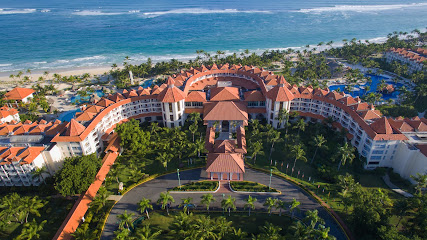
Barceló Bávaro Beach - All Inclusive Adults Only
Discover the ultimate adults-only paradise at Barceló Bávaro Beach, where luxury meets relaxation in the heart of Punta Cana.

Royalton Punta Cana, An Autograph Collection All-Inclusive Resort & Casino
Discover luxury and adventure at Royalton Punta Cana, where stunning beaches and top-notch amenities await for an unforgettable vacation experience.

Royalton Bavaro All-Inclusive Resort & Spa
Experience unparalleled luxury and relaxation at Royalton Bavaro All-Inclusive Resort & Spa in Punta Cana, where every moment is crafted for your enjoyment.

Downtown Punta Cana
Discover the vibrant culture and exciting activities at Downtown Punta Cana, your ultimate entertainment and shopping destination in the heart of paradise.
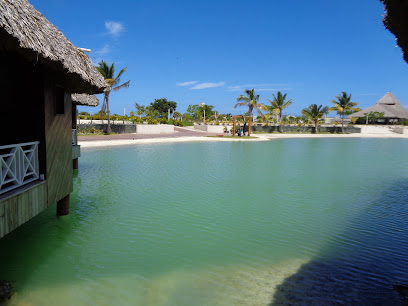
Monkeyland
Experience the thrill of interacting with playful monkeys in the tropical paradise of Monkeyland, Dominican Republic.
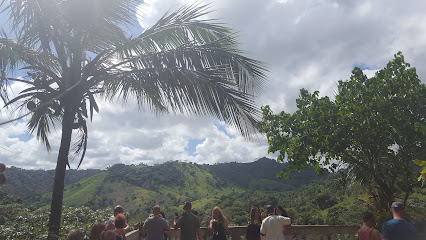
Bavaro Adventure Park | Punta Cana Tours & Excursions
Discover Bavaro Adventure Park: Punta Cana's ultimate destination for thrilling rides, family fun, and unforgettable experiences in the heart of the Caribbean.
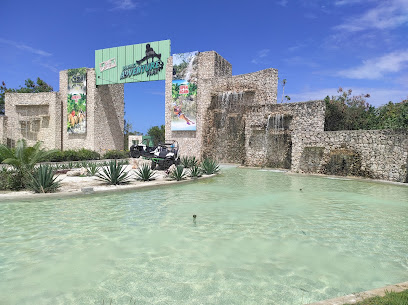
Dreams Macao Beach Punta Cana
Experience the ultimate Caribbean escape at Dreams Macao Beach Punta Cana, where luxury meets natural beauty for an unforgettable vacation.
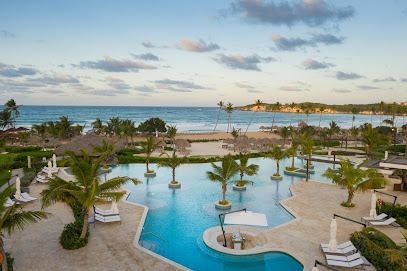
Zoëtry Agua Punta Cana
Experience the ultimate in relaxation and luxury at Zoëtry Agua Punta Cana, a stunning resort in the heart of the Dominican Republic.
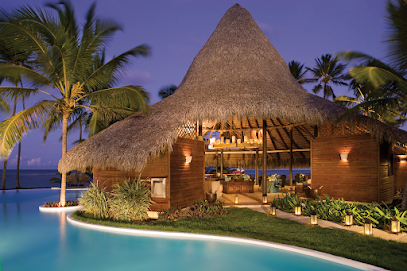
Evolution Adventure Park
Discover excitement and natural beauty at Evolution Adventure Park in La Ceiba, where adventure awaits for all ages in a stunning tropical setting.
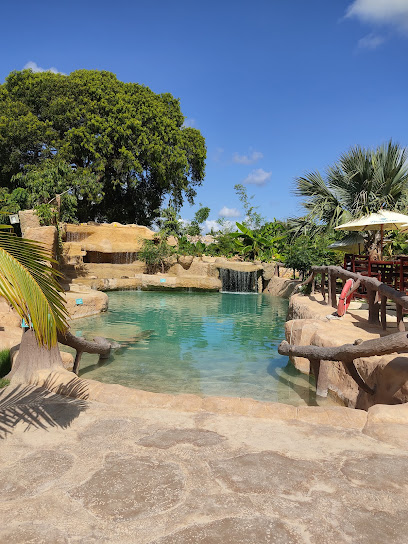
Iglesia católica Jesus Maestro
Discover the tranquility of Iglesia Católica Jesús Maestro, a stunning Catholic church and cultural gem in the heart of Punta Cana.

Otium International
Discover the best of Punta Cana with Otium International, your go-to sightseeing tour agency for unforgettable Caribbean adventures.
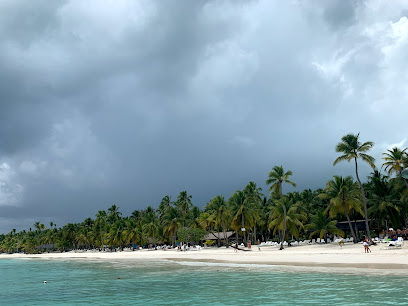
Dominican Airport Shuttle
Experience the ease of travel in Punta Cana with Dominican Airport Shuttle, your trusted transportation service to explore the beauty of the Dominican Republic.
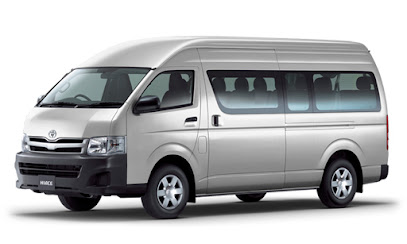
Unmissable attractions to see
Splash Water Park
Discover Splash Water Park in Punta Cana, a family-friendly aquatic paradise filled with thrilling slides, serene pools, and endless summer fun.
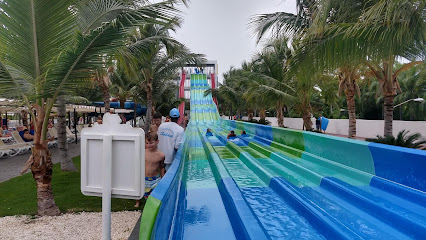
Dolphin Discovery Punta Cana
Experience unforgettable dolphin encounters and thrilling rides at Dolphin Discovery Punta Cana, a premier marine attraction in the heart of the Dominican Republic.
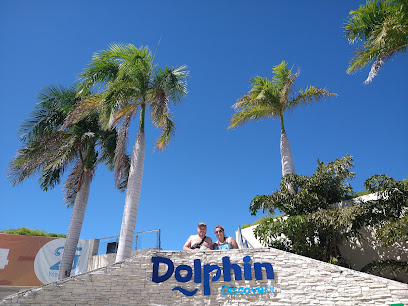
Natural Pool
Experience the breathtaking Natural Pool in Punta Cana, a serene oasis surrounded by lush nature and perfect for relaxation and adventure.
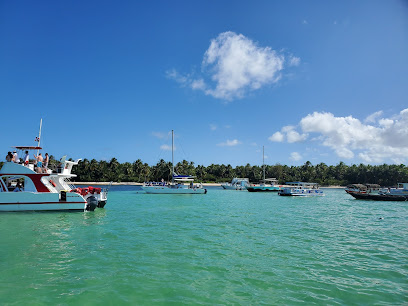
Playa Gran Bahia Principe
Experience the breathtaking beauty of Playa Gran Bahia Principe, where golden sands meet crystal-clear waters in Punta Cana's tropical paradise.
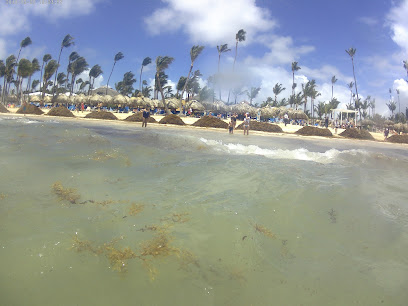
BAHIA SCOUTS WATER PARK
Discover endless fun and excitement at Bahia Scouts Water Park in Punta Cana, a perfect family-friendly destination for adventure seekers and relaxation.
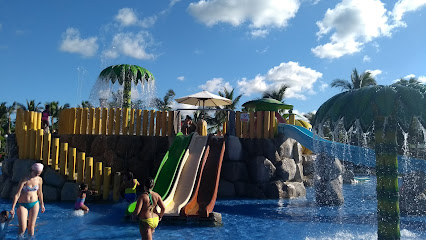
Seaquarium Punta Cana
Experience the wonders of the ocean at Seaquarium Punta Cana, where adventure meets education in a breathtaking setting.
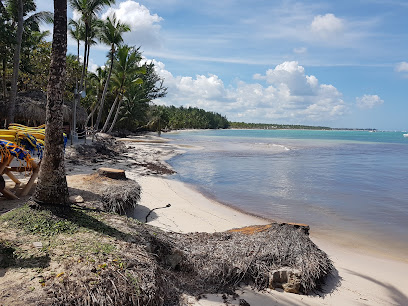
Marinarium Snorkeling Cruise
Discover the Caribbean's marine life with the Marinarium Snorkeling Cruise, where adventure and relaxation await in the crystal-clear waters of Punta Cana.
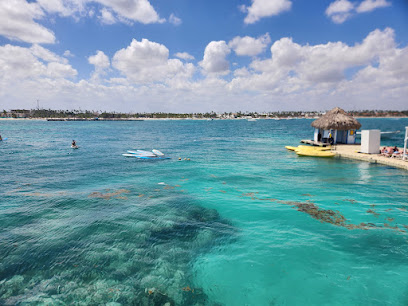
Evolution Adventure Park
Experience the ultimate adventure at Evolution Adventure Park, where thrilling activities meet breathtaking natural beauty in La Ceiba, Dominican Republic.
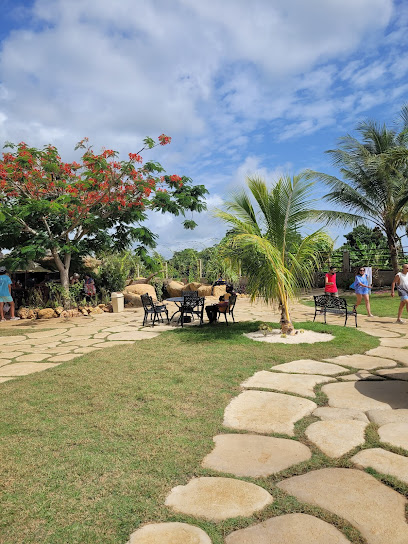
Pirates Island Water Park
Discover endless fun and adventure at Pirates Island Water Park in Punta Cana, the ultimate destination for water lovers and thrill-seekers!

Quisqueya Adventures
Explore Quisqueya Adventures in Punta Cana for thrilling activities, breathtaking nature, and a glimpse into Dominican culture.
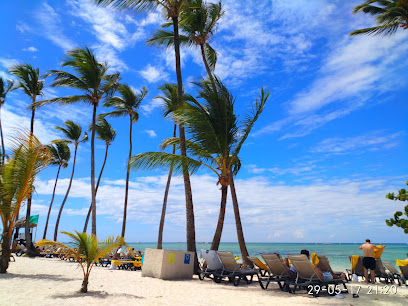
Chez Nicole Boutique
Explore the charm of Chez Nicole Boutique in Punta Cana, offering unique gifts and local art that capture the essence of the Dominican Republic.
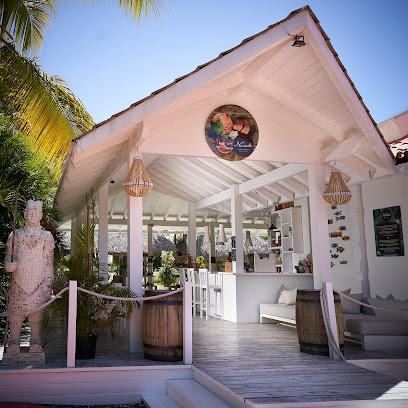
Happy Fish Catamarans
Experience the beauty of Punta Cana with Happy Fish Catamarans, where adventure meets relaxation on the sparkling Caribbean Sea.
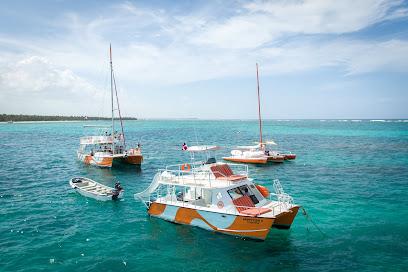
Beach at Bavaro Princess All Suits Resort, Spa and Casino
Explore the pristine sands and vibrant atmosphere of the Beach at Bavaro Princess All Suites Resort, Spa and Casino in Punta Cana, a tropical retreat for all.
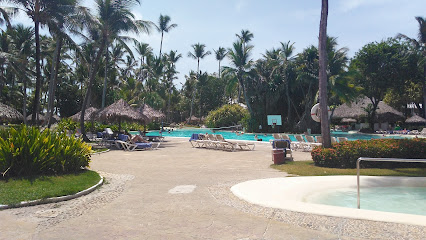
El Dorado Water Park
Experience the ultimate water fun at El Dorado Water Park in Punta Cana, a perfect destination for families and adventure seekers alike.

Gone Fishing Punta Cana
Experience world-class fishing in the beautiful waters of Punta Cana at Gone Fishing Punta Cana, where every trip is an unforgettable adventure.

Essential places to dine
Jellyfish Restaurant
Experience exquisite seafood dining with stunning ocean views at Jellyfish Restaurant in Punta Cana – where flavor meets fun!
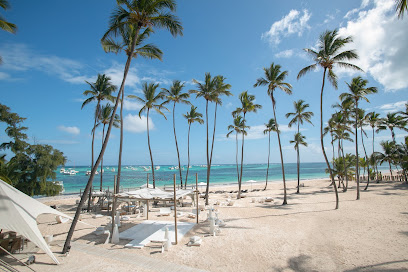
Restaurante capitán Cook
Experience authentic Caribbean cuisine at Restaurante Capitán Cook in Punta Cana – a must-visit for food lovers seeking fresh seafood and vibrant flavors.
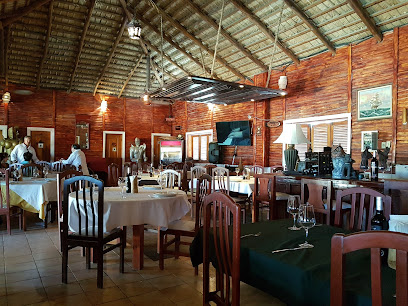
Citrus Fusion Cuisine
Discover vibrant flavors at Citrus Fusion Cuisine in Punta Cana - where local ingredients meet global culinary artistry.

Yao Asian Cuisine
Experience authentic Asian flavors at Yao Asian Cuisine in Punta Cana – where culinary excellence meets vibrant culture.
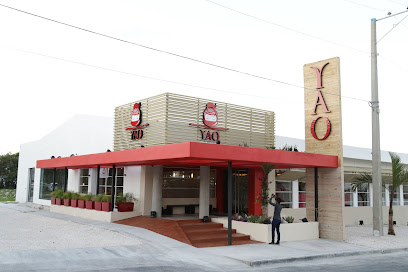
Onno's Punta Cana / Bavaro
Experience vibrant dining at Onno's Punta Cana with live music, delicious seafood & American favorites in the heart of Bavaro.
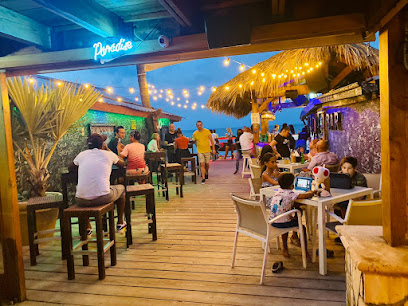
Wacamole taco bar
Discover authentic Mexican flavors at Wacamole Taco Bar in Punta Cana – where every taco tells a story!

La Paisana
Savor the flavors of Argentina & Mexico at La Paisana – where culinary tradition meets vibrant dining in Punta Cana.
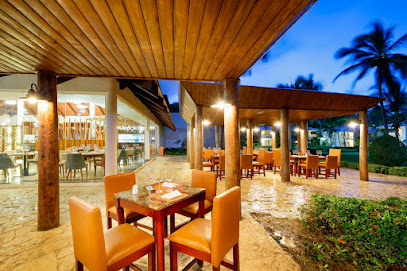
Delicias De Bavaro
Discover the authentic taste of the Dominican Republic at Delicias De Bavaro - where every meal is a delightful journey.

Dolce Italia Bavaro
Experience authentic Italian cuisine at Dolce Italia Bavaro in Punta Cana – where every meal feels like a celebration.
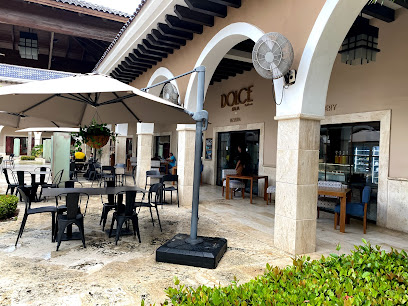
punta cana Dominican republic
Explore Punta Cana: A Tropical Haven for Food Lovers with Exquisite Dining Experiences Amidst Stunning Beaches.
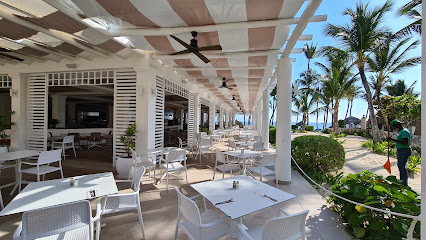
Herman 311 Bar & Restaurant
Experience exquisite seafood dining at Herman 311 Bar & Restaurant in Punta Cana's vibrant Bávaro district.
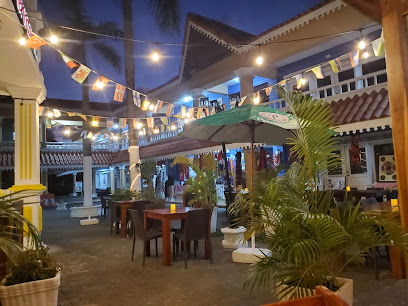
La Fuente
Experience authentic Spanish cuisine at La Fuente in Punta Cana's Barceló Bavaro Palace—where flavor meets elegance.
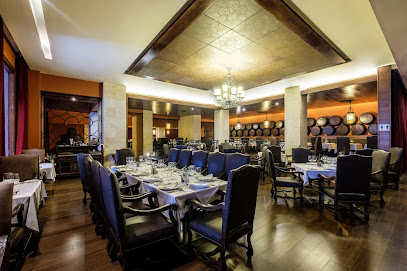
Portofino Italian Restaurant
Experience the taste of Italy in Punta Cana at Portofino Italian Restaurant – where authentic cuisine meets tropical paradise.
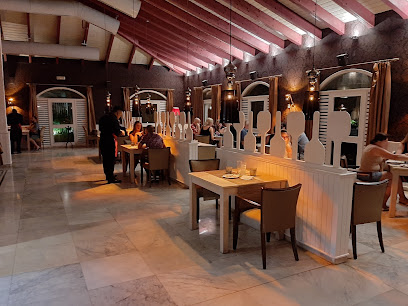
El Gaucho Steak House
Experience authentic Argentine flavors at El Gaucho Steak House, where every steak is grilled to perfection in the heart of Punta Cana.
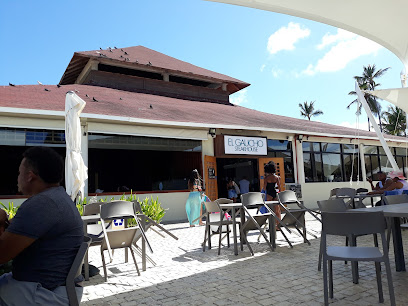
Portofino
Discover Portofino in Punta Cana: A culinary paradise blending local flavors with international cuisine amidst stunning Caribbean views.
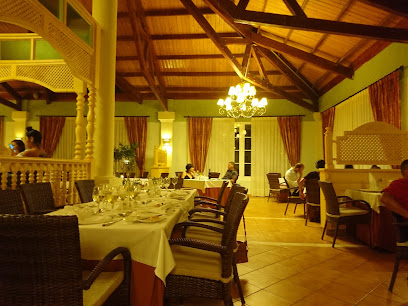
Markets, malls and hidden boutiques
Mundo Autentico
Discover the essence of the Dominican Republic at Mundo Autentico, where authentic souvenirs, handcrafted chocolates, and exquisite jewelry await.
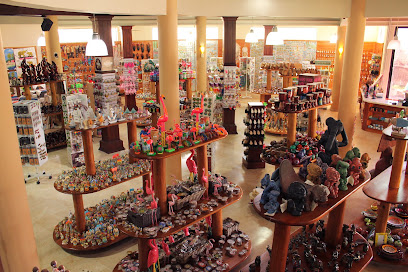
Chez Nicole Boutique
Explore unique fashion at Chez Nicole Boutique in Punta Cana, where vibrant Caribbean style meets personalized service and affordable prices.

Ola Souvenirs
Discover unique Dominican gifts and souvenirs at Ola Souvenirs in Punta Cana, where local craftsmanship meets Caribbean charm.
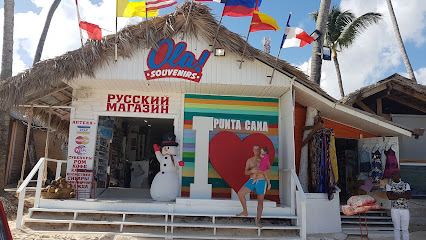
Plaza Punta Cana
Experience the pulse of shopping and dining at Plaza Punta Cana, where vibrant culture meets Caribbean charm.

Магазин Рай - Gift Shop Sky
Discover unique souvenirs and local treasures at Магазин Рай - Gift Shop Sky in Punta Cana, where every item tells a story.
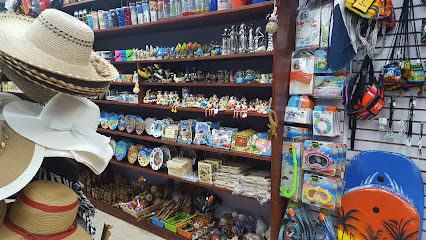
Plaza Bavaro
Discover the artistic heart of Punta Cana at Plaza Bavaro, a vibrant marketplace for stunning paintings and unique crafts.
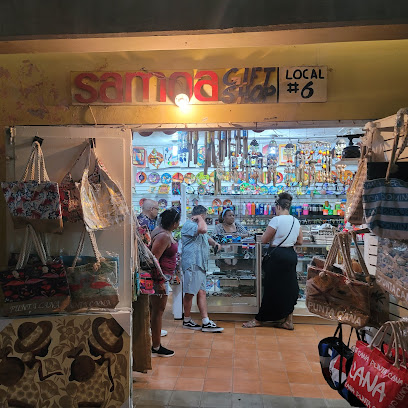
Punta Cana Treasure
Explore Punta Cana Treasure, your go-to souvenir store for authentic Dominican crafts and gifts that capture the essence of your Caribbean adventure.
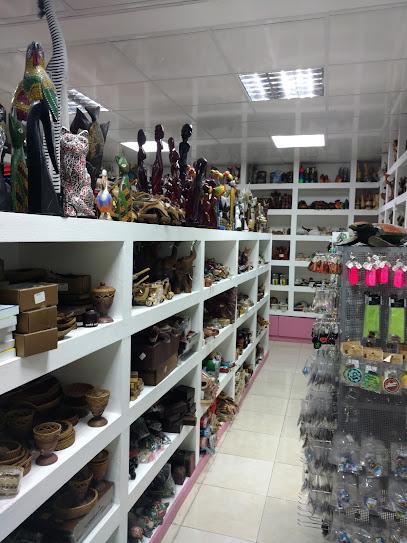
Jireh Souvenirs
Explore the vibrant Jireh Souvenirs in Punta Cana for unique handicrafts and authentic Dominican memorabilia, perfect for every traveler.
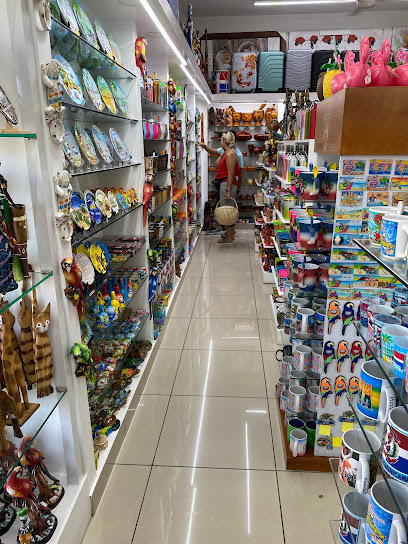
OQP Only Quality Products
Discover unique souvenirs and high-quality crafts at OQP Only Quality Products in Punta Cana's Bavaro Shopping Center, a must-visit for every traveler.
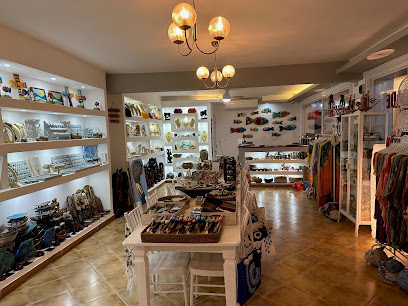
Junior Gift Shop
Discover the essence of the Dominican Republic at Junior Gift Shop in Punta Cana, where unique souvenirs and local crafts await every traveler.
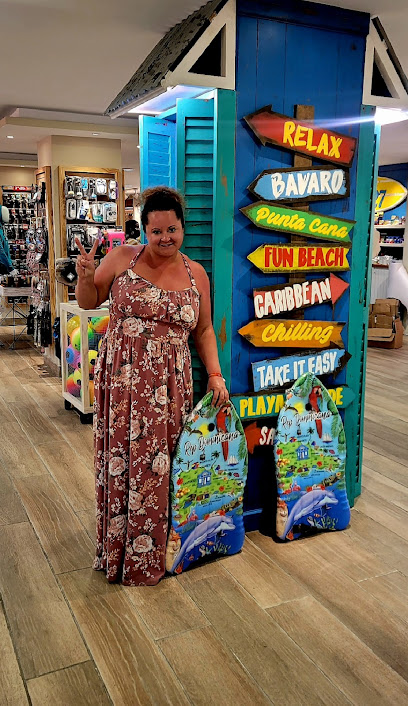
Top Style Boutique
Discover the latest in men's fashion at Top Style Boutique in Punta Cana, where style meets sophistication in a vibrant shopping ambiance.

Shopping center
Explore the Punta Cana Shopping Center for unique gifts and local treasures that capture the spirit of the Dominican Republic.
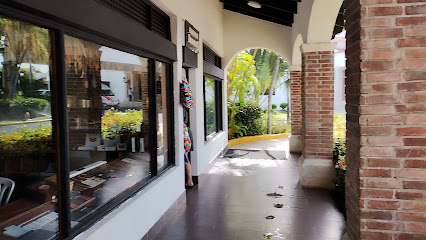
Feria Artesanal Bambú Gift Shop
Explore the vibrant Feria Artesanal Bambú Gift Shop in Punta Cana for unique handcrafted gifts and a taste of Dominican culture.
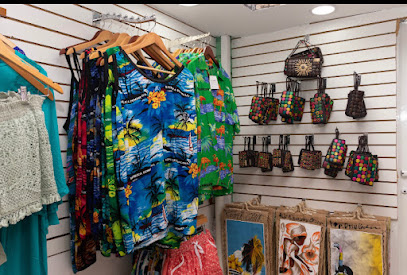
PUNTA BLANCA MALL
Explore Punta Blanca Mall in Punta Cana for a unique shopping experience filled with local culture, diverse dining options, and vibrant entertainment.
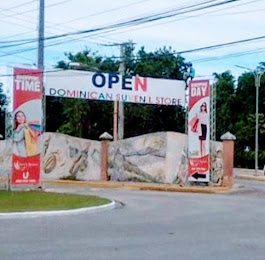
Mini Market
Explore Mini Market in Punta Cana for unique Dominican crafts, delightful souvenirs, and a taste of local culture.
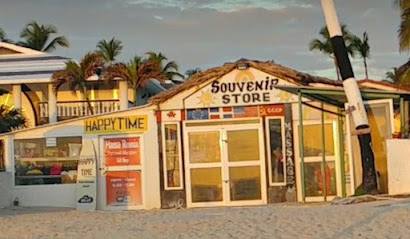
Essential bars & hidden hideouts
Drink Point Bavaro
Experience the vibrant nightlife of Punta Cana at Drink Point Bavaro, where great drinks and dancing await you.
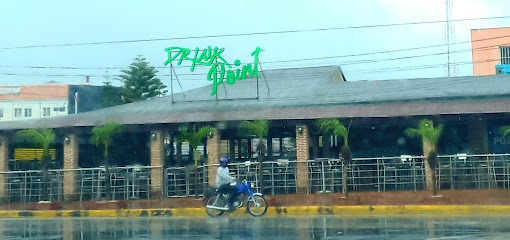
Onno's Punta Cana / Bavaro
Experience the vibrant blend of dining, live music, and nightlife at Onno's Punta Cana, the ultimate beachside destination for tourists.
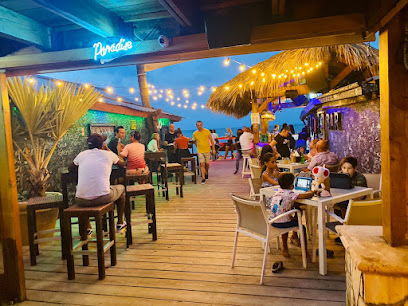
Lobby Bar
Experience the lively ambiance and refreshing drinks at the Lobby Bar in Occidental Punta Cana, the perfect spot to unwind after a day of adventure.
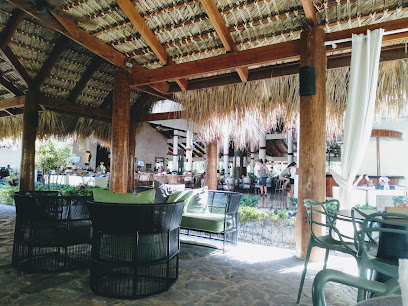
Bavaro Corner Bar
Experience the vibrant nightlife of Bávaro at Bavaro Corner Bar, where sports, delicious food, and local culture come together.
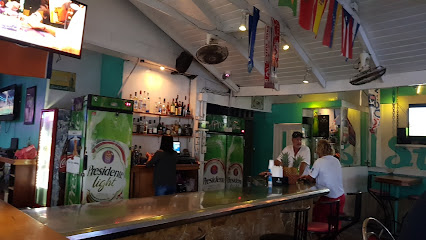
Fifty Fifty
Discover the lively atmosphere of Fifty Fifty, a premier bar in Punta Cana offering refreshing drinks, great music, and unforgettable nightlife experiences.
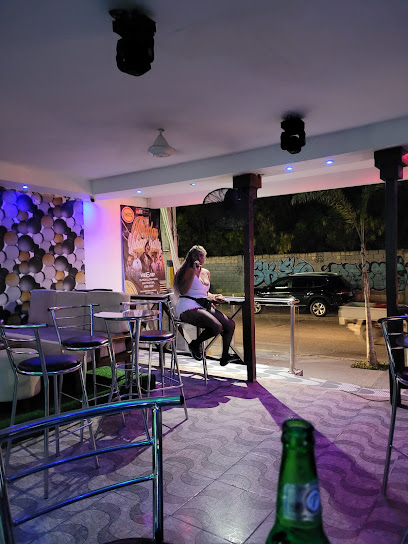
Bar Siboney
Discover Bar Siboney, your tropical retreat in Punta Cana, offering refreshing cocktails, live music, and a vibrant atmosphere at affordable prices.
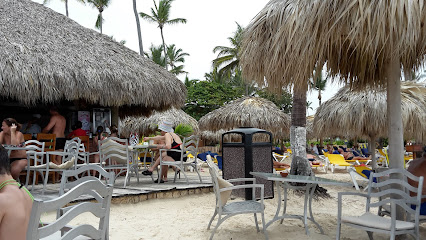
Hemingway
Experience the vibrant nightlife at Hemingway Bar in Punta Cana, where tropical cocktails and live music create the perfect Caribbean escape.
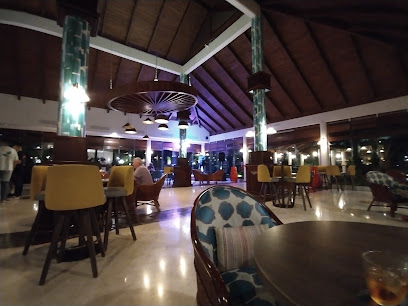
Lambi beach bar by palladium Bavaro
Experience the essence of Punta Cana at Lambi Beach Bar, where stunning ocean views meet refreshing cocktails in a tropical paradise.

Flamingo Bar
Discover the vibrant Flamingo Bar in Punta Cana, an ideal spot for refreshing cocktails, lively ambiance, and unforgettable beachside relaxation.
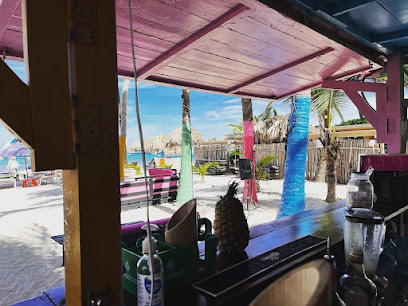
Bar del lobby
Discover the lively Bar del Lobby in Punta Cana, where refreshing cocktails and vibrant atmosphere await to enhance your travel experience.
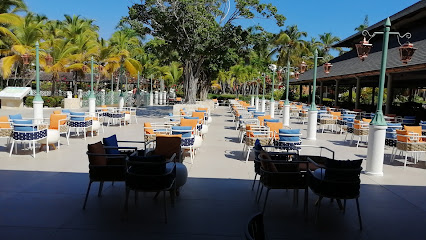
First Wine
Experience the best of local and international wines at First Wine, Punta Cana's charming wine bar, perfect for every wine enthusiast.
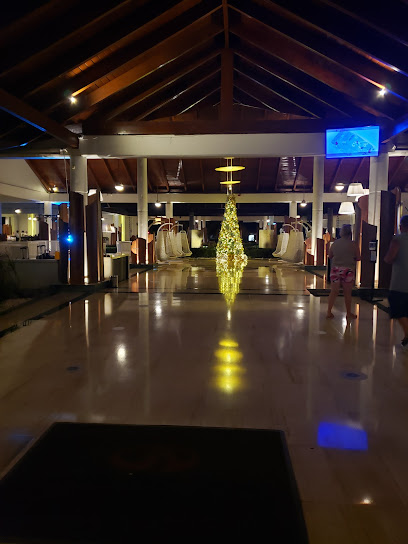
Social Bar
Experience the vibrant nightlife and refreshing cocktails at Social Bar, a must-visit spot in Punta Cana for every traveler.
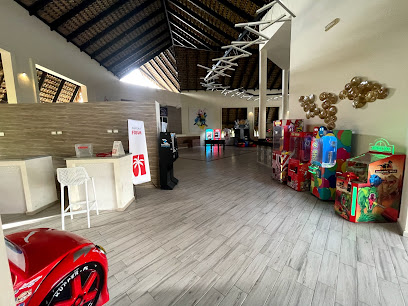
Messes Bar
Experience the vibrant nightlife at Messes Bar, a premier spot in Punta Cana offering delicious cocktails and a lively atmosphere for tourists.
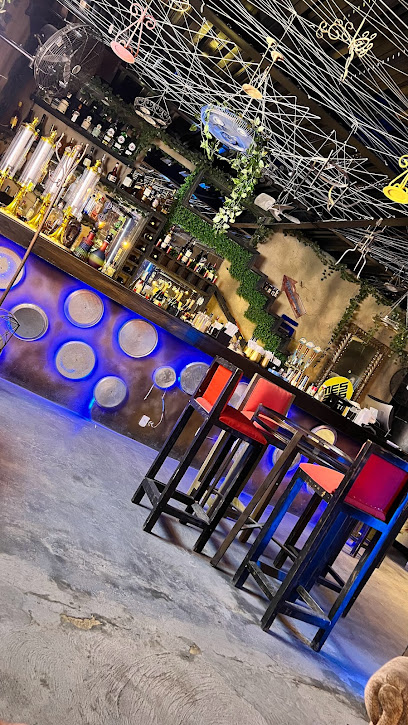
Carey Lobby Bar
Experience the perfect blend of relaxation and elegance at Carey Lobby Bar, nestled in the luxurious Barceló Bávaro Palace, Punta Cana.
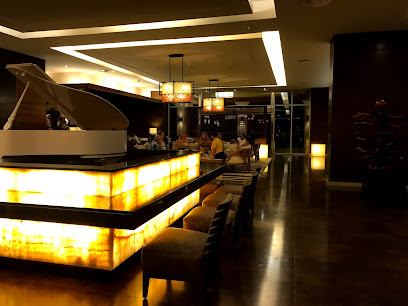
Rum & Juliet Spice and Sugar Bar
Discover the vibrant flavors and inviting atmosphere of Rum & Juliet Spice and Sugar Bar in Punta Cana, a must-visit destination for cocktail lovers.
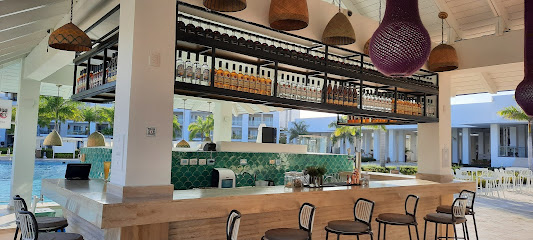
Local Phrases about Bavaro
-
- HelloHola
[oh-la] - GoodbyeAdiós
[ah-dee-ohs] - YesSí
[see] - NoNo
[no] - Please/You're welcomePor favor
[por fah-vor] - Thank youGracias
[grah-see-ahs] - Excuse me/SorryPerdón
[pair-dohn] - How are you?¿Cómo estás?
[koh-moh es-tahs] - Fine. And you?Bien. ¿Y tú?
[bee-en. ee too] - Do you speak English?¿Hablas inglés?
[ah-blahs een-glays] - I don't understandNo entiendo
[noh en-tee-en-doh]
- HelloHola
-
- I'd like to see the menu, pleaseMe gustaría ver el menú, por favor
[may goos-tah-ree-ah ver el may-noo, por fah-vor] - I don't eat meatNo como carne
[noh koh-moh kahr-nay] - Cheers!¡Salud!
[sah-lood] - I would like to pay, pleaseMe gustaría pagar, por favor
[may goos-tah-ree-ah pah-gar, por fah-vor]
- I'd like to see the menu, pleaseMe gustaría ver el menú, por favor
-
- Help!¡Ayuda!
[ah-yoo-dah] - Go away!¡Vete!
[veh-teh] - Call the Police!¡Llama a la Policía!
[yah-mah ah lah poh-lee-see-ah] - Call a doctor!¡Llama a un médico!
[yah-mah ah oon meh-dee-koh] - I'm lostEstoy perdido/a
[es-toy pair-dee-doh/ah] - I'm illEstoy enfermo/a
[es-toy en-fehr-moh/ah]
- Help!¡Ayuda!
-
- I'd like to buy...Me gustaría comprar...
[may goos-tah-ree-ah kohm-prar...] - I'm just lookingSólo estoy mirando
[soh-loh es-toy mee-rahn-doh] - How much is it?¿Cuánto cuesta?
[kwan-toh kway-stah] - That's too expensiveEso es demasiado caro
[ay-soh es deh-mah-see-ah-doh kah-roh] - Can you lower the price?¿Puedes bajar el precio?
[pway-des bah-har el pree-syoh]
- I'd like to buy...Me gustaría comprar...
-
- What time is it?¿Qué hora es?
[kay oh-rah es] - It's one o'clockEs la una
[es lah oo-nah] - Half past (10)Y media (10)
[ee meh-dee-ah (10)] - MorningMañana
[mah-nyah-nah] - AfternoonTarde
[tahr-deh] - EveningNoche
[noh-cheh] - YesterdayAyer
[ah-yehr] - TodayHoy
[oy] - TomorrowMañana
[mah-nyah-nah] - 1Uno
[oo-noh] - 2Dos
[dohs] - 3Tres
[trays] - 4Cuatro
[kwah-troh] - 5Cinco
[sink-oh] - 6Seis
[says] - 7Siete
[syeh-teh] - 8Ocho
[oh-choh] - 9Nueve
[nweh-veh] - 10Diez
[dyehs]
- What time is it?¿Qué hora es?
-
- Where's a/the...?¿Dónde está...?
[dohn-deh es-tah] - What's the address?¿Cuál es la dirección?
[kwal es lah dee-rek-syon] - Can you show me (on the map)?¿Puedes mostrarme (en el mapa)?
[pway-des mohs-trar-meh (en el mah-pah)] - When's the next (bus)?¿Cuándo es el próximo (autobús)?
[kwan-doh es el proh-see-moh (ow-toh-boos)] - A ticket (to ....)Un boleto (a ....)
[oon boh-leh-toh (ah ....)]
- Where's a/the...?¿Dónde está...?
History of Bavaro
-
Before the arrival of Europeans, the area now known as Bávaro was inhabited by the Taíno people. They were the indigenous inhabitants of the island of Hispaniola, and their settlements were characterized by small, communal villages. The Taíno culture included advanced agricultural practices, pottery, and a rich mythology that still influences Dominican culture today.
-
In 1492, Christopher Columbus arrived on the island of Hispaniola, marking the beginning of European contact. The Spanish colonization led to the establishment of the first European settlements. The colonizers introduced new agricultural products and livestock, but their arrival also brought diseases that devastated the indigenous Taíno population. Bávaro, like much of the Dominican Republic, was shaped by these early colonial influences.
-
During the 16th and 17th centuries, the Caribbean Sea was a hotspot for pirates and privateers. The coastal areas of the Dominican Republic, including Bávaro, were frequented by these seafarers. The region's strategic location made it a target for those seeking to plunder Spanish ships laden with treasures from the New World. This tumultuous period left a lasting impact on the local culture and folklore.
-
In the 19th and early 20th centuries, Bávaro was primarily an agricultural community. The fertile lands were used for growing sugar cane, coffee, and tobacco. These crops were significant to the local economy and provided employment for many residents. The agricultural heritage of Bávaro is still evident in the region's landscape and traditions.
-
The late 20th century marked the beginning of Bávaro's transformation into a tourism hotspot. The development of Punta Cana International Airport in 1984 made the area more accessible to international travelers. Investors recognized the potential of Bávaro's pristine beaches, and luxury resorts began to spring up along the coastline. This shift from agriculture to tourism brought economic growth and modern infrastructure to the region.
-
Bávaro is known for its vibrant cultural festivals, which celebrate the Dominican Republic's rich heritage. The most notable of these is the annual Carnival, held in February. This colorful event features parades, music, dancing, and traditional costumes. Other festivals, such as the Merengue and Bachata Festival, highlight the region's musical traditions and draw visitors from around the world.
Bavaro Essentials
-
Bavaro is located in the eastern part of the Dominican Republic, within the Punta Cana region. The nearest international airport is Punta Cana International Airport (PUJ), which is about a 20-minute drive from Bavaro. Most major airlines offer direct flights to PUJ from various international destinations. Upon arrival, you can take a taxi or arrange for a private shuttle to reach your accommodation in Bavaro.
-
Bavaro is well-connected and offers several transportation options. Taxis are available and can be hailed or booked in advance. Moto-taxis (motorcycle taxis) are also a common and inexpensive way to get around. Public buses, known as 'guaguas,' operate within Bavaro and to nearby towns. Car rentals are available for those who prefer to explore at their own pace, but be aware that driving conditions can be challenging for those unfamiliar with local traffic rules and road conditions.
-
The official currency of the Dominican Republic is the Dominican Peso (DOP). Credit cards are widely accepted in hotels, restaurants, and shops, but it's advisable to carry some cash for smaller establishments and street vendors. ATMs are readily available in Bavaro, and most dispense both pesos and USD. It is recommended to use official currency exchange services rather than street vendors to avoid unfavorable rates.
-
Bavaro is generally considered safe for tourists, but it's important to take standard safety precautions. Avoid walking alone at night in poorly lit or unfamiliar areas. Keep your personal belongings secure and be cautious of your surroundings. Areas outside of the main tourist spots can have higher crime rates targeting tourists, so it’s best to stay within well-populated and well-lit areas. Always use reputable transportation services.
-
In case of an emergency, dial 911 for immediate assistance. Bavaro has several medical facilities, including hospitals and clinics, for health emergencies. It is highly recommended to have travel insurance that covers medical emergencies and other unexpected events. Pharmacies are available for minor health issues, and many staff members speak English. Keep the contact information of your country's embassy or consulate handy.
-
Fashion: Do wear light, breathable clothing due to the tropical climate. Swimwear is acceptable at the beach but not in restaurants or shops. Religion: Do respect local customs and religious practices. Dress modestly when visiting religious sites. Public Transport: Do be polite and patient on public buses and moto-taxis. Avoid displaying valuables. Greetings: Do greet people with a friendly 'Hola' or 'Buenos días.' A handshake is common. Eating & Drinking: Do try local dishes and beverages. Avoid drinking tap water; bottled water is recommended.
-
To experience Bavaro like a local, visit the local markets for fresh produce and handmade crafts. Engage with locals; they are generally friendly and enjoy sharing their culture. Don't miss out on local festivals and events to get a taste of Dominican culture. For a unique experience, take a boat tour to nearby Saona Island or explore the Indigenous Eyes Ecological Park. Tipping is customary in restaurants and for services; 10% is standard.
Trending Landmarks in Bavaro
-
Barceló Bávaro Palace
-
Bahia Principe Grand Bavaro
-
Occidental Caribe
-
Barceló Bávaro Beach - All Inclusive Adults Only
-
Royalton Punta Cana, An Autograph Collection All-Inclusive Resort & Casino
-
Royalton Bavaro All-Inclusive Resort & Spa
-
Downtown Punta Cana
-
Monkeyland
-
Bavaro Adventure Park | Punta Cana Tours & Excursions
-
Dreams Macao Beach Punta Cana
-
Zoëtry Agua Punta Cana
-
Evolution Adventure Park
-
Iglesia católica Jesus Maestro
-
Otium International
-
Dominican Airport Shuttle
Nearby Cities to Bavaro
-
Things To Do in Bayahibe
-
Things To Do in La Romana
-
Things To Do in Samana
-
Things To Do in Rincon
-
Things To Do in Aguadilla
-
Things To Do in Isabela
-
Things To Do in Cabo Rojo
-
Things To Do in Santo Domingo
-
Things To Do in Guánica
-
Things To Do in Arecibo
-
Things To Do in Manatí
-
Things To Do in Ponce
-
Things To Do in Dorado
-
Things To Do in Jarabacoa
-
Things To Do in Bayamón









